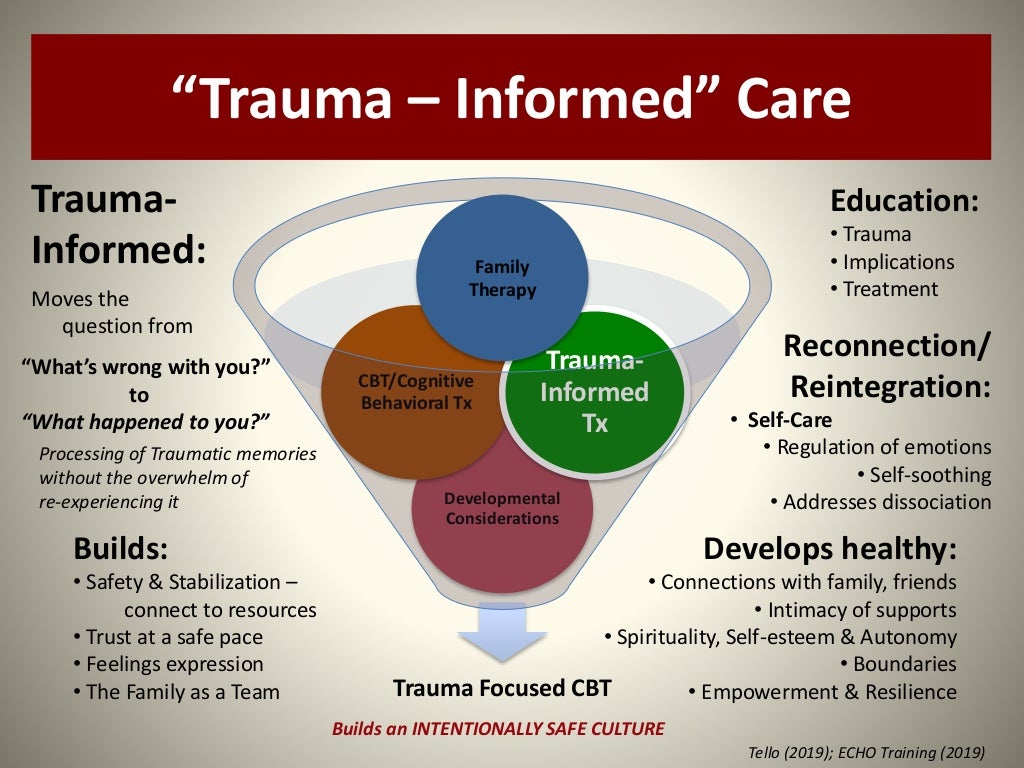Effective Trauma-Focused CBT Worksheets for Healing

Trauma-Focused Cognitive Behavioral Therapy (TF-CBT) has emerged as a highly effective treatment approach for children, adolescents, and adults who have experienced traumatic events. This therapeutic technique aims to reduce negative emotional and behavioral responses following trauma. Integral to this treatment are worksheets, which serve as tools to guide individuals through the process of confronting and managing their traumatic experiences. This post will explore how these TF-CBT worksheets can be effectively utilized in healing, offering insights into their design, benefits, and practical application.
Understanding TF-CBT and Its Importance

TF-CBT is grounded in cognitive-behavioral principles, focusing on the links between thoughts, emotions, and behaviors related to traumatic experiences. Here’s why TF-CBT is crucial:
- Evidence-Based Practice: Numerous studies have shown TF-CBT’s effectiveness in reducing PTSD symptoms, depression, and anxiety.
- Structured and Goal-Oriented: It provides a structured framework with clear steps towards recovery, making the healing process tangible.
- Family-Focused: Often involves family members to improve support systems, which is essential for long-term healing.
- Skill-Building: Equips individuals with coping skills that are useful beyond the therapy sessions.
Designing Effective TF-CBT Worksheets

To ensure TF-CBT worksheets facilitate healing, they must be:
- Age-Appropriate: Tailored to the cognitive and developmental stage of the individual.
- Interactive: Engaging with visual aids or interactive components to keep interest high.
- Goal-Directed: Clearly aligned with the therapeutic goals set in the session.
- Incremental: Gradual in approach, starting from less to more complex trauma-related topics.
Here are some common types of TF-CBT worksheets and their purposes:
| Worksheet Type | Purpose |
|---|---|
| Trauma Narrative Worksheets | Guide clients in creating a structured narrative of their traumatic event(s). |
| Cognitive Processing Sheets | Help identify and challenge distorted cognitions related to the trauma. |
| Emotional Regulation Exercises | Assist in learning and practicing techniques for managing emotional reactions. |
| Exposure Exercises | Facilitate gradual exposure to traumatic memories in a controlled setting. |

Benefits of Using TF-CBT Worksheets

The use of TF-CBT worksheets offers several advantages:
- Structured Approach: They provide a clear path for dealing with traumatic memories, reducing the unpredictability of therapy.
- Home Practice: Enables individuals to continue their healing process outside of therapy sessions, promoting consistency.
- Empowerment: Encourages autonomy in managing emotional responses and challenging thoughts.
- Measurement of Progress: Worksheets serve as a visual record of progress, which can be motivating.
Implementing TF-CBT Worksheets in Therapy

Here’s how therapists can effectively integrate these worksheets into therapy sessions:
- Introduction: Begin by explaining the purpose of each worksheet. Make sure the client understands how it aligns with their therapeutic goals.
- Guided Completion: Work through the worksheet together initially, offering support and guidance.
- Follow-Up: Review the completed worksheet in subsequent sessions to discuss insights, challenges, and progress.
- Home Assignments: Encourage clients to complete worksheets at home, which can be reviewed during sessions to reinforce learning.
- Adaptation: Tailor the worksheets as needed to address individual needs and to keep engagement high.
🌟 Note: It's crucial to adapt worksheets for cultural relevance to ensure that the content resonates with the client’s background and experiences.
Challenges and Considerations

Despite their benefits, using TF-CBT worksheets has its challenges:
- Resistance: Some clients might resist structured activities or find them triggering.
- Limited Engagement: Not all clients engage well with written exercises, particularly if they have learning difficulties or language barriers.
- Overreliance: There’s a risk of therapists becoming overly dependent on worksheets, potentially reducing the personalized aspect of therapy.
In summary, TF-CBT worksheets are invaluable tools in the trauma healing journey, providing structure, skills, and a sense of empowerment to those who have suffered from traumatic events. By thoughtfully integrating these worksheets into therapy, therapists can enhance the therapeutic process, making recovery more accessible and effective. The key lies in customization, understanding the client's needs, and ensuring continuous engagement and support throughout their healing process.
What are the core components of TF-CBT?

+
The core components of TF-CBT include Psychoeducation, Parenting Skills, Relaxation Techniques, Affective Modulation, Cognitive Coping, Trauma Narrative Development, In Vivo Mastery, Conjoint Sessions, Enhancing Safety, and Future Development.
How do TF-CBT worksheets benefit trauma survivors?

+
TF-CBT worksheets help by structuring therapy, promoting home practice, empowering individuals to manage their responses, and providing a measurable indicator of progress.
Can TF-CBT worksheets be used without a therapist?

+
While worksheets can be educational tools on their own, they are most effective when used as part of a comprehensive TF-CBT treatment plan under the guidance of a qualified therapist.
What should I do if I feel overwhelmed using a TF-CBT worksheet?

+
If a worksheet becomes overwhelming, pause your work. Use relaxation techniques, reach out to your therapist, or consider discussing the issue in your next session.
Are there different worksheets for children and adults?

+
Yes, TF-CBT worksheets are tailored to different age groups. Children’s worksheets often include more interactive, play-based, or simplified exercises, whereas those for adults might be more complex and cognitive in nature.



